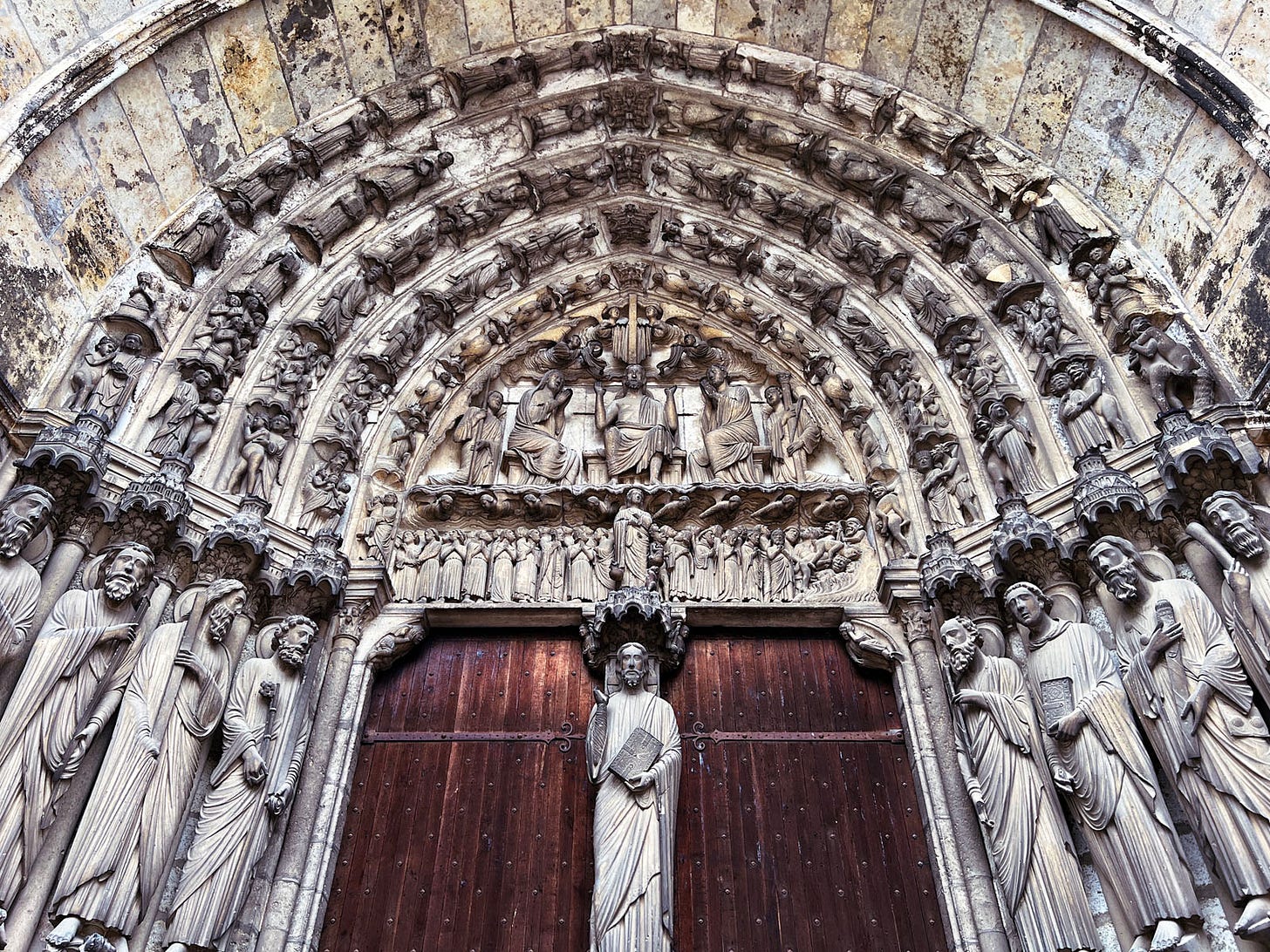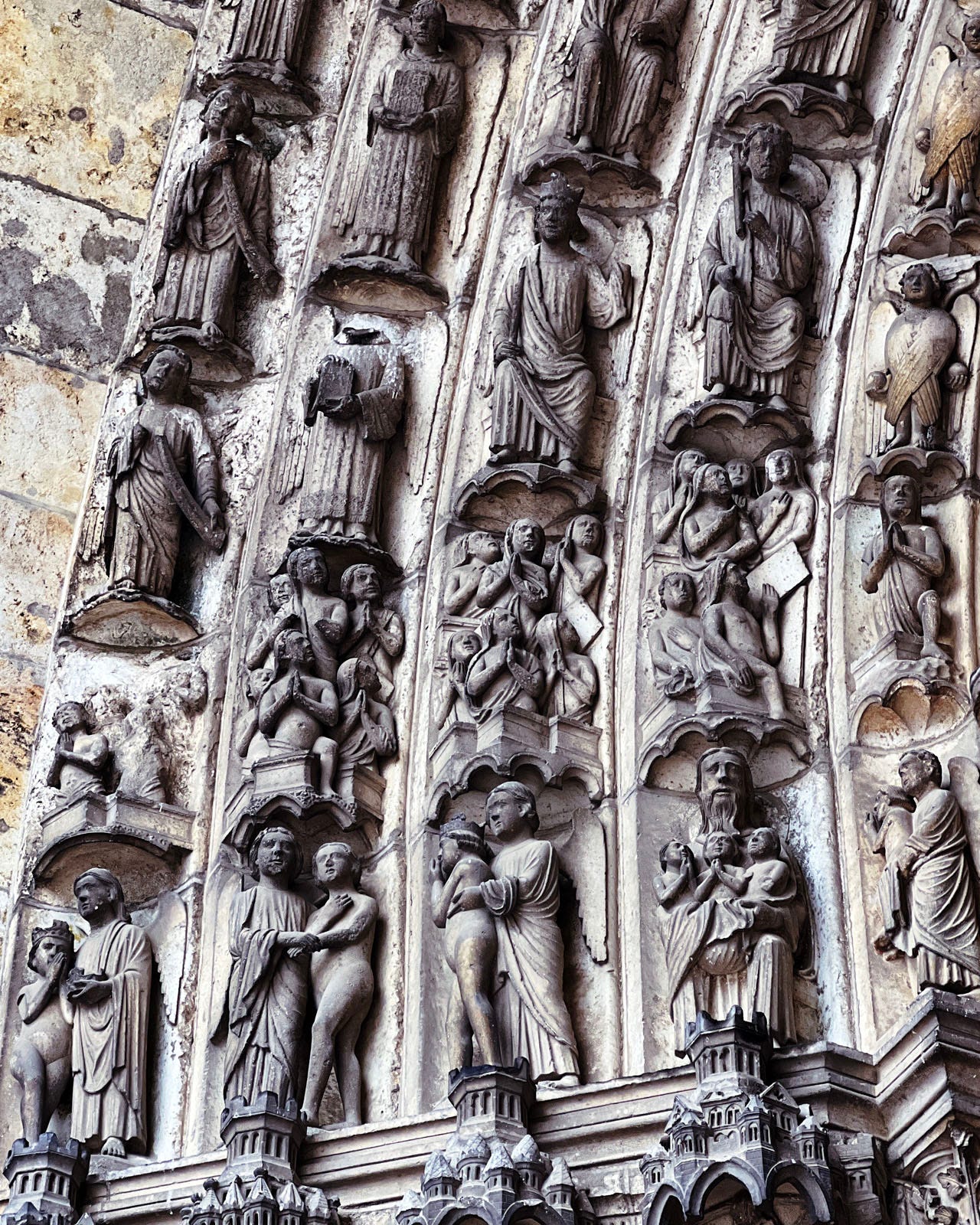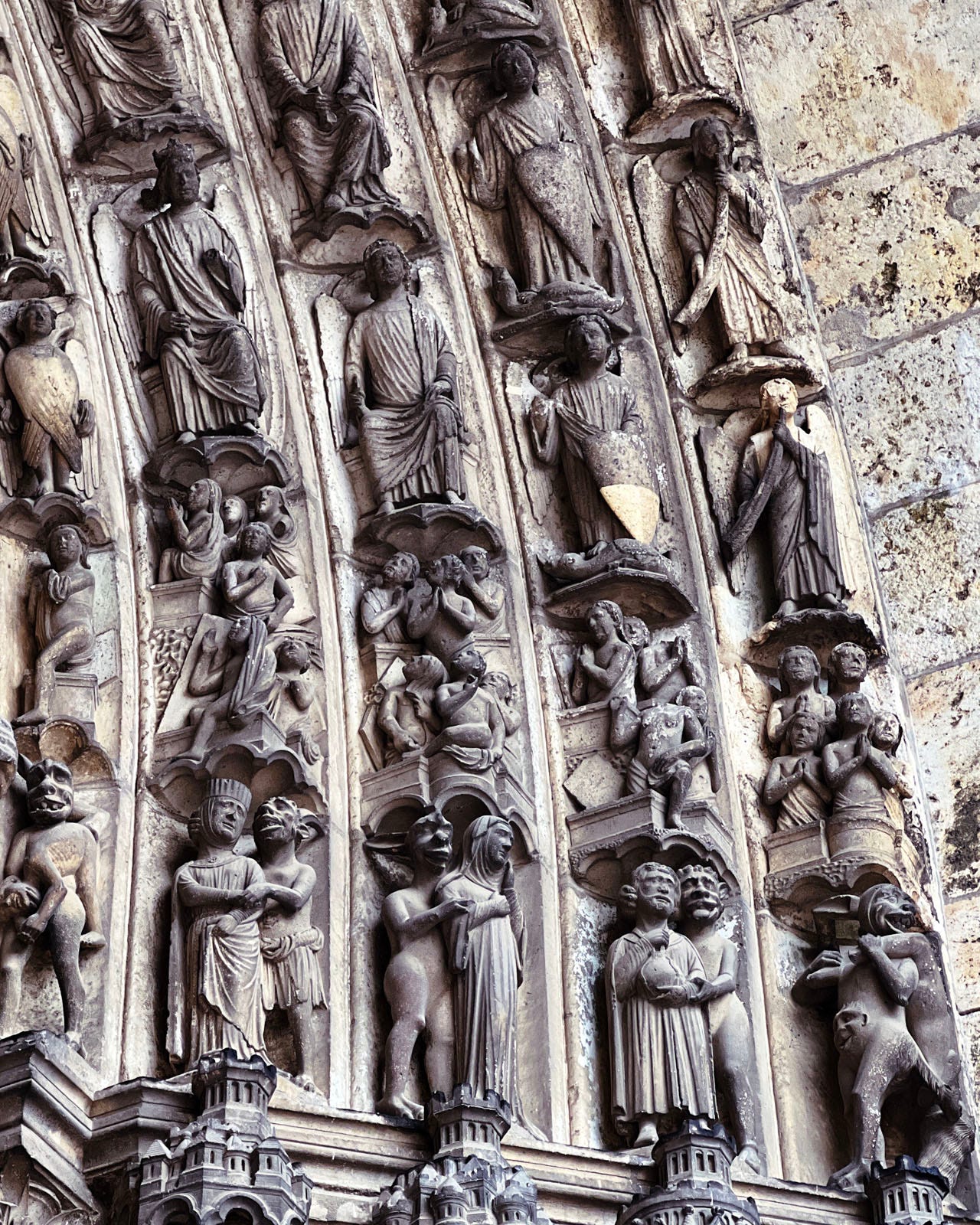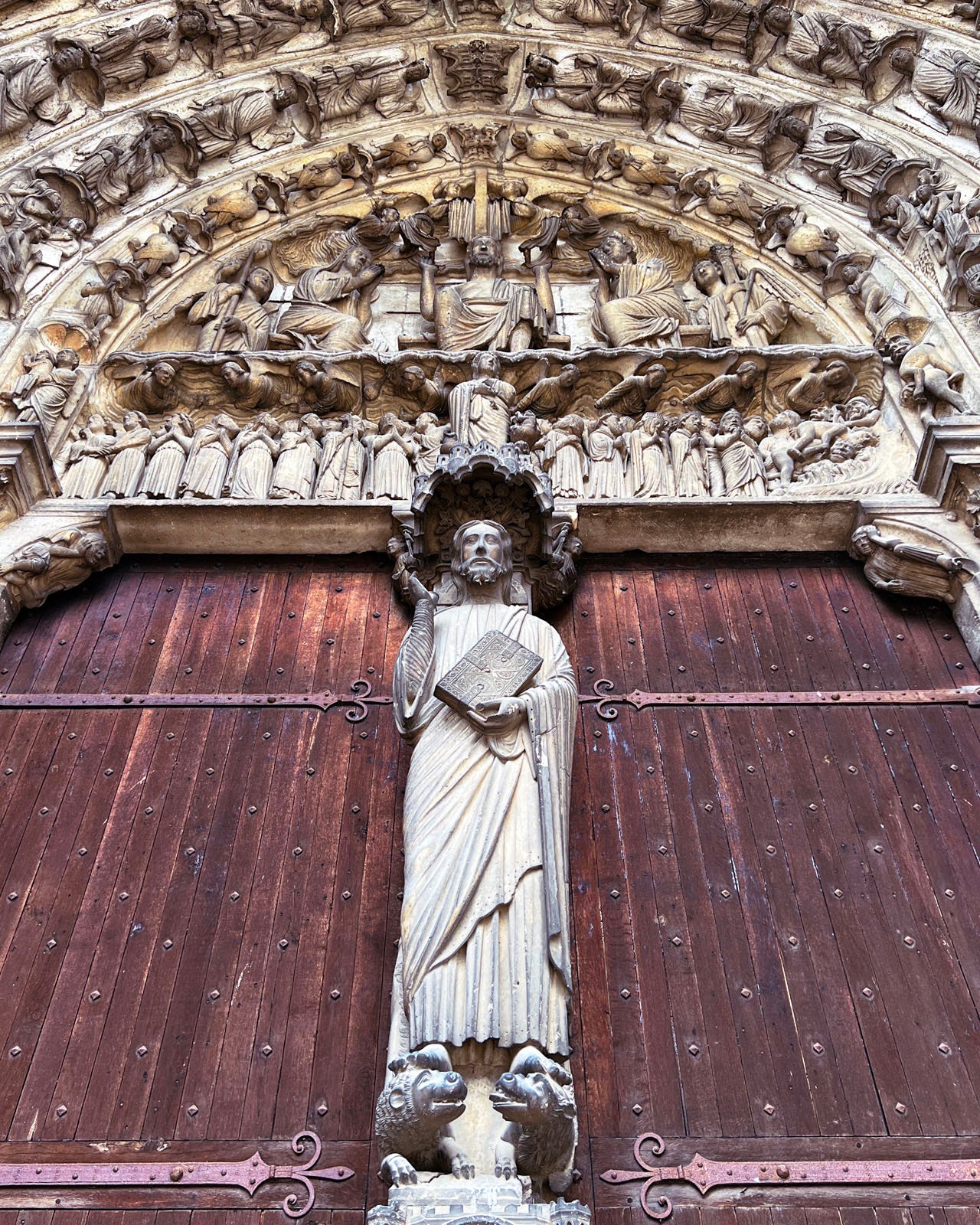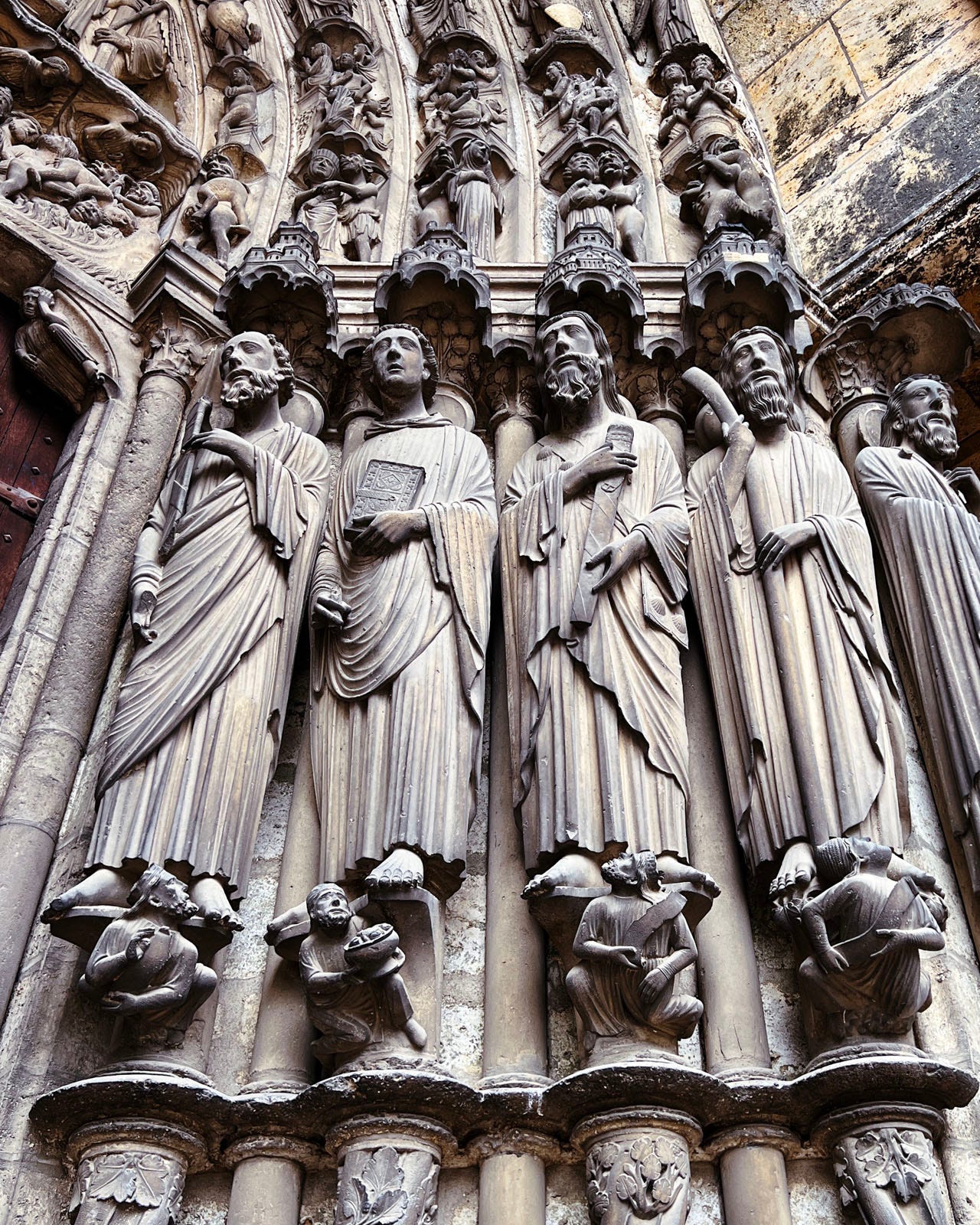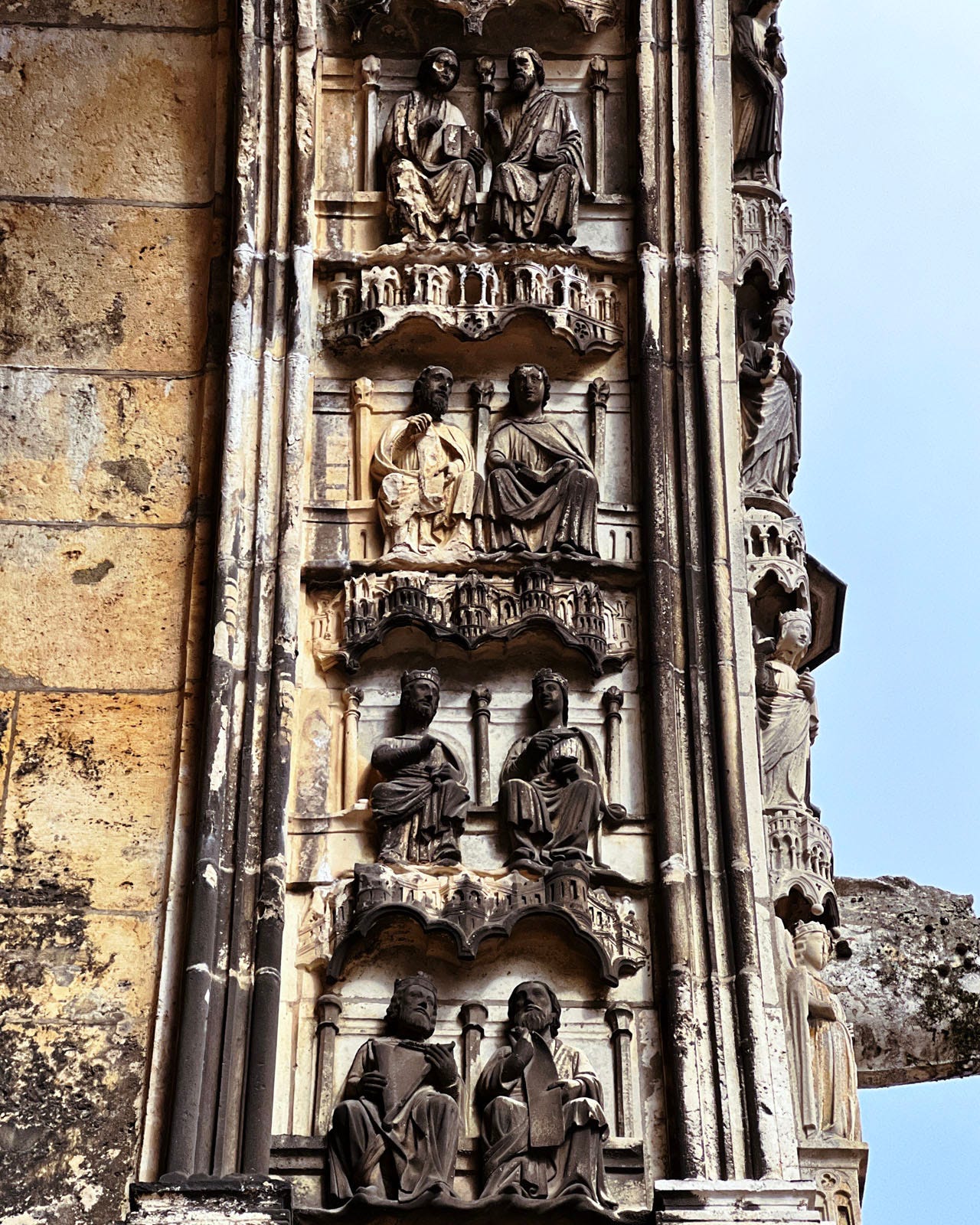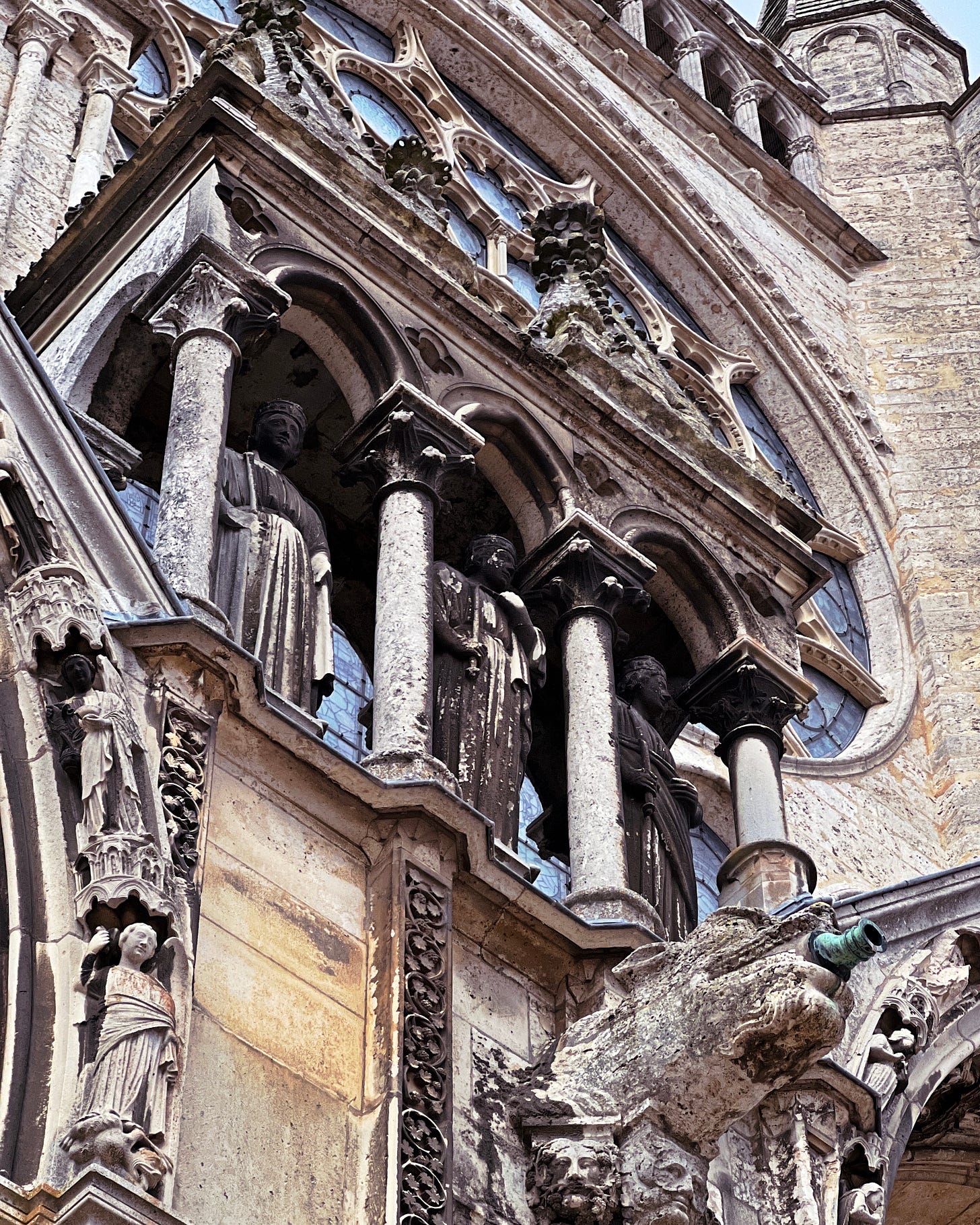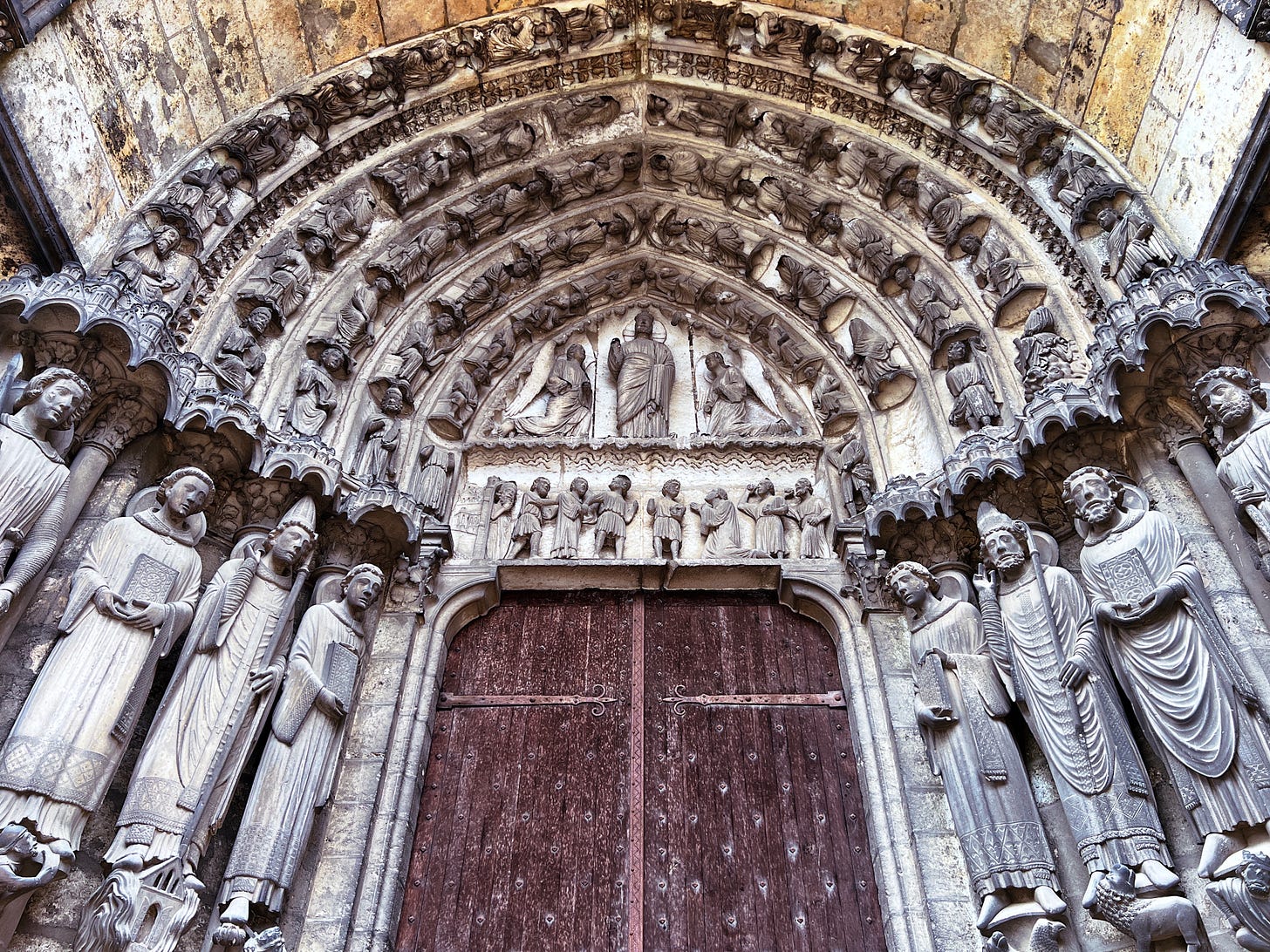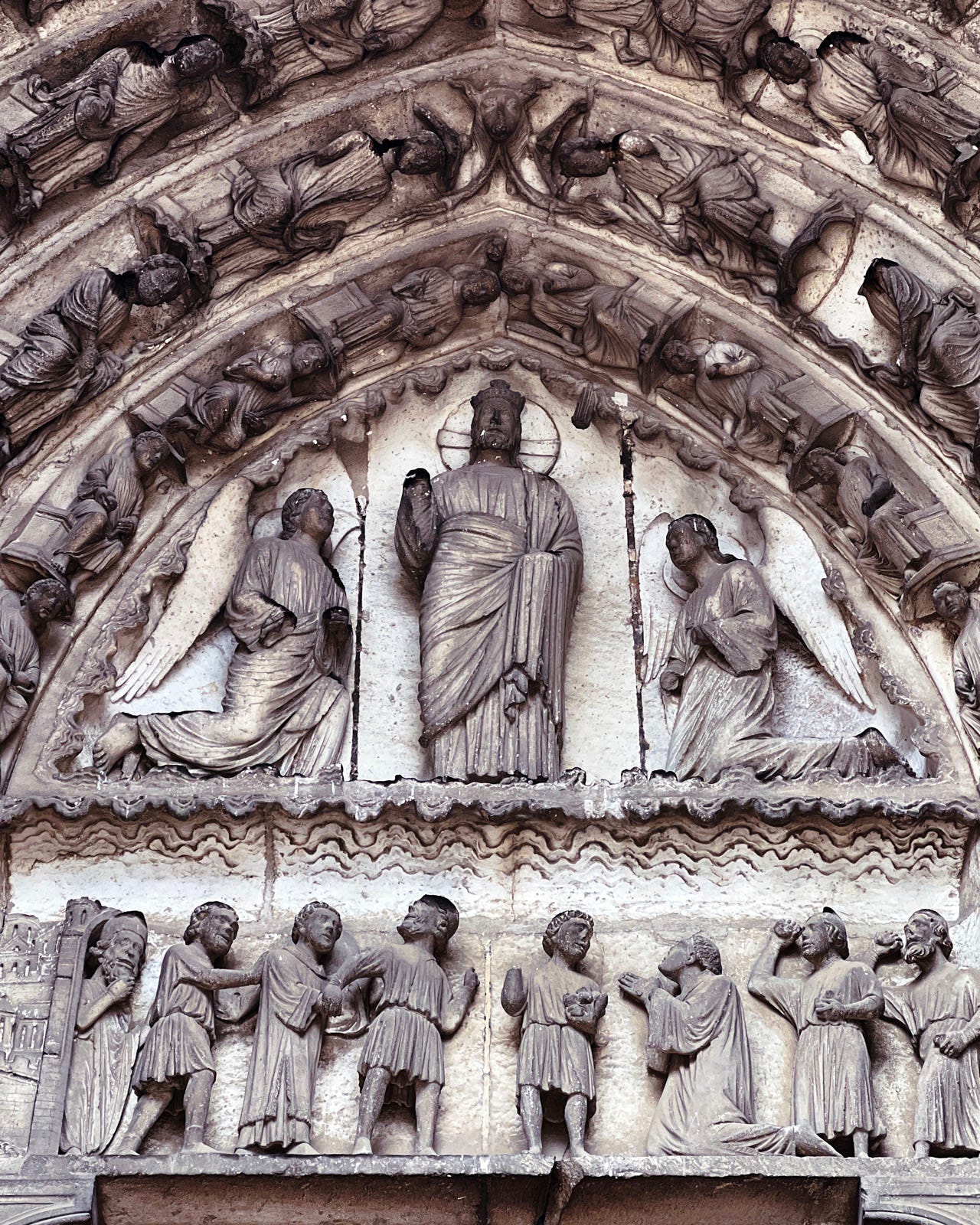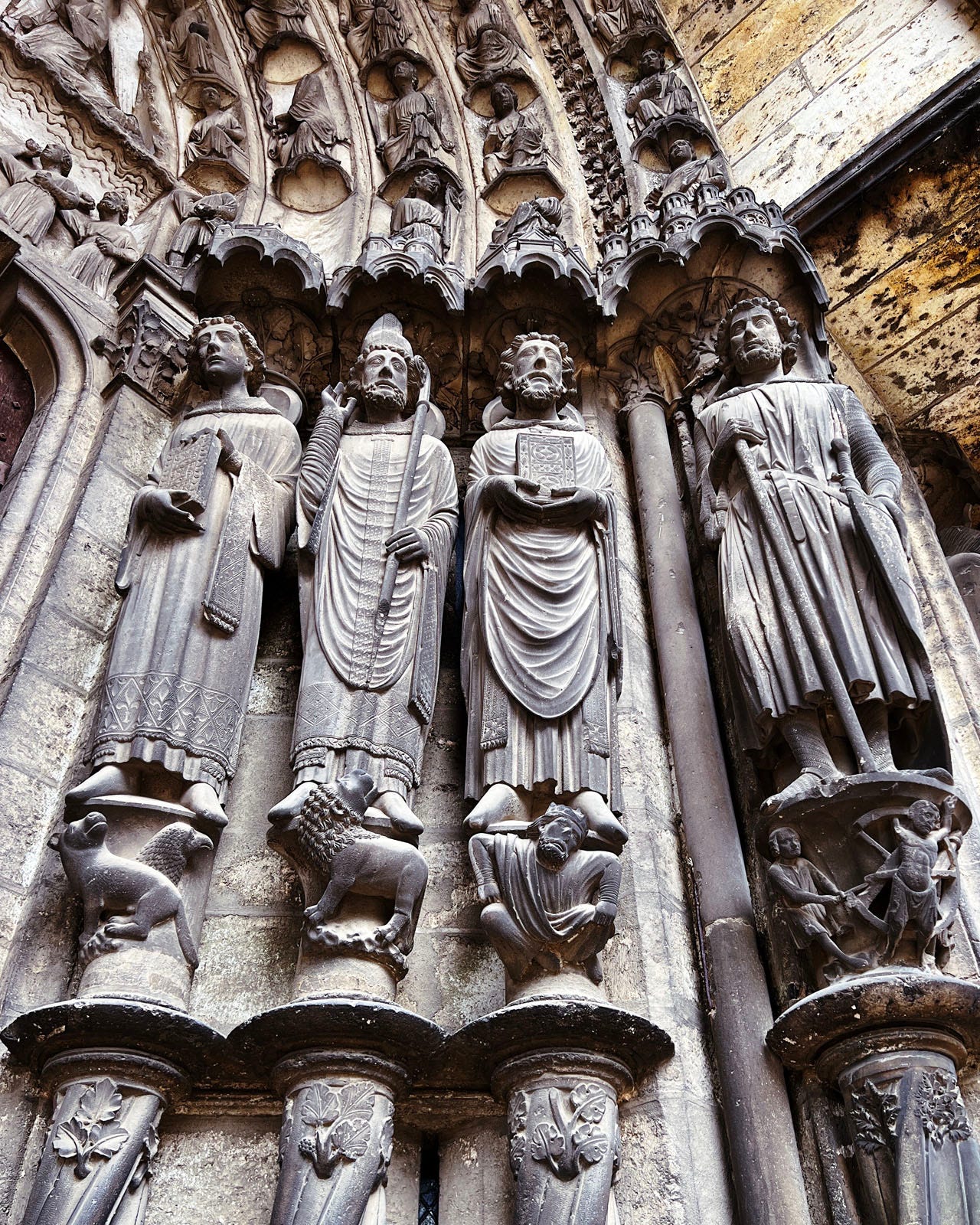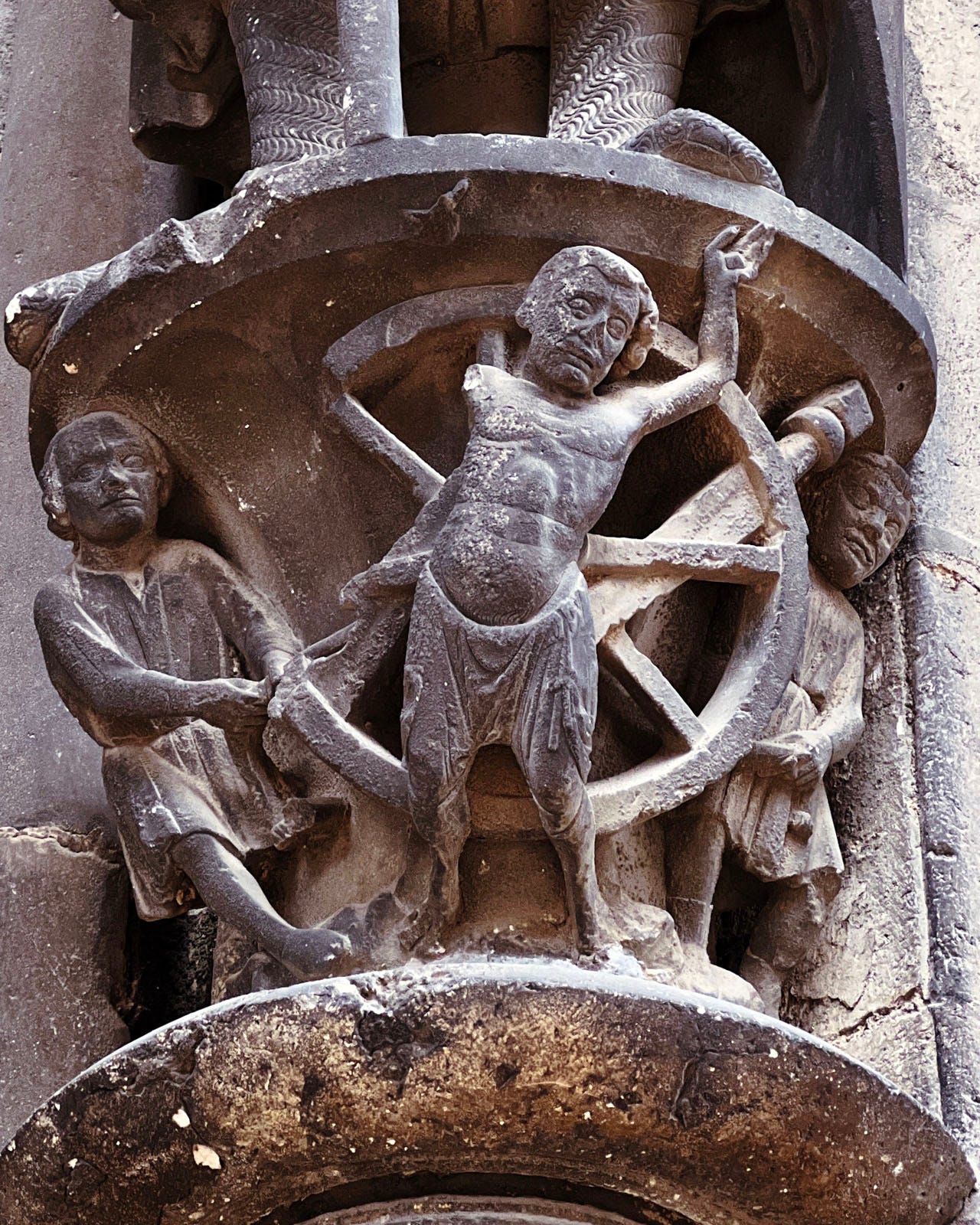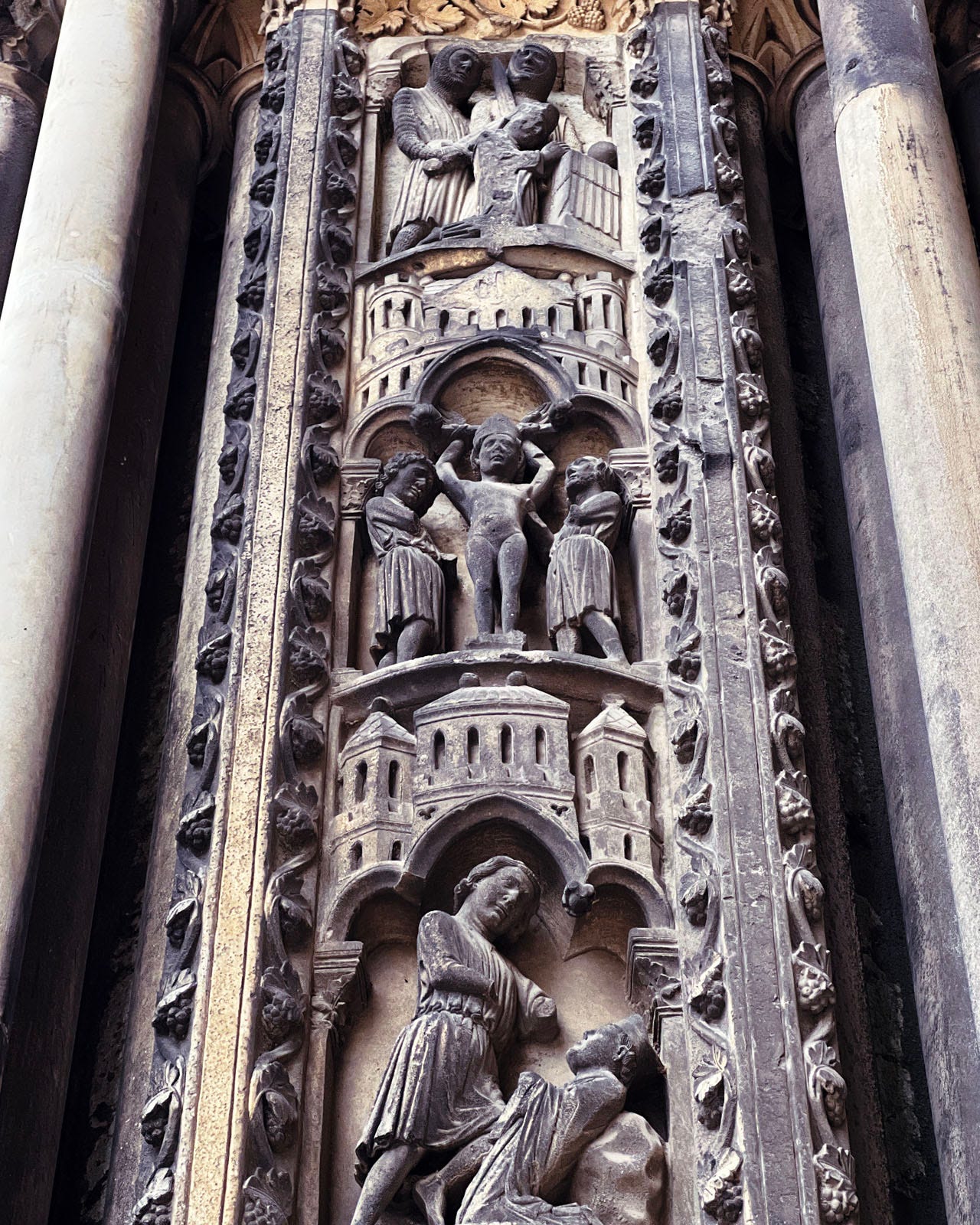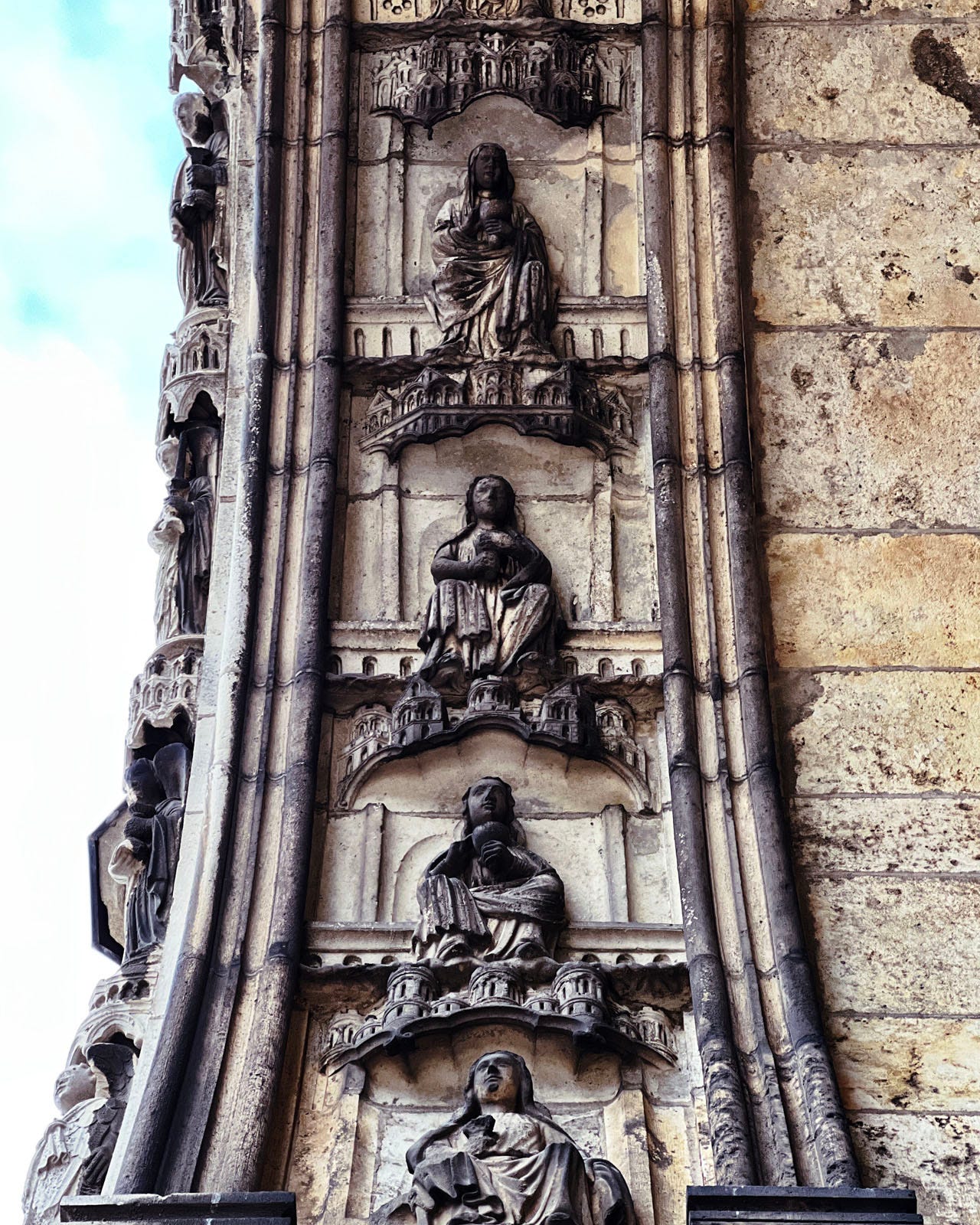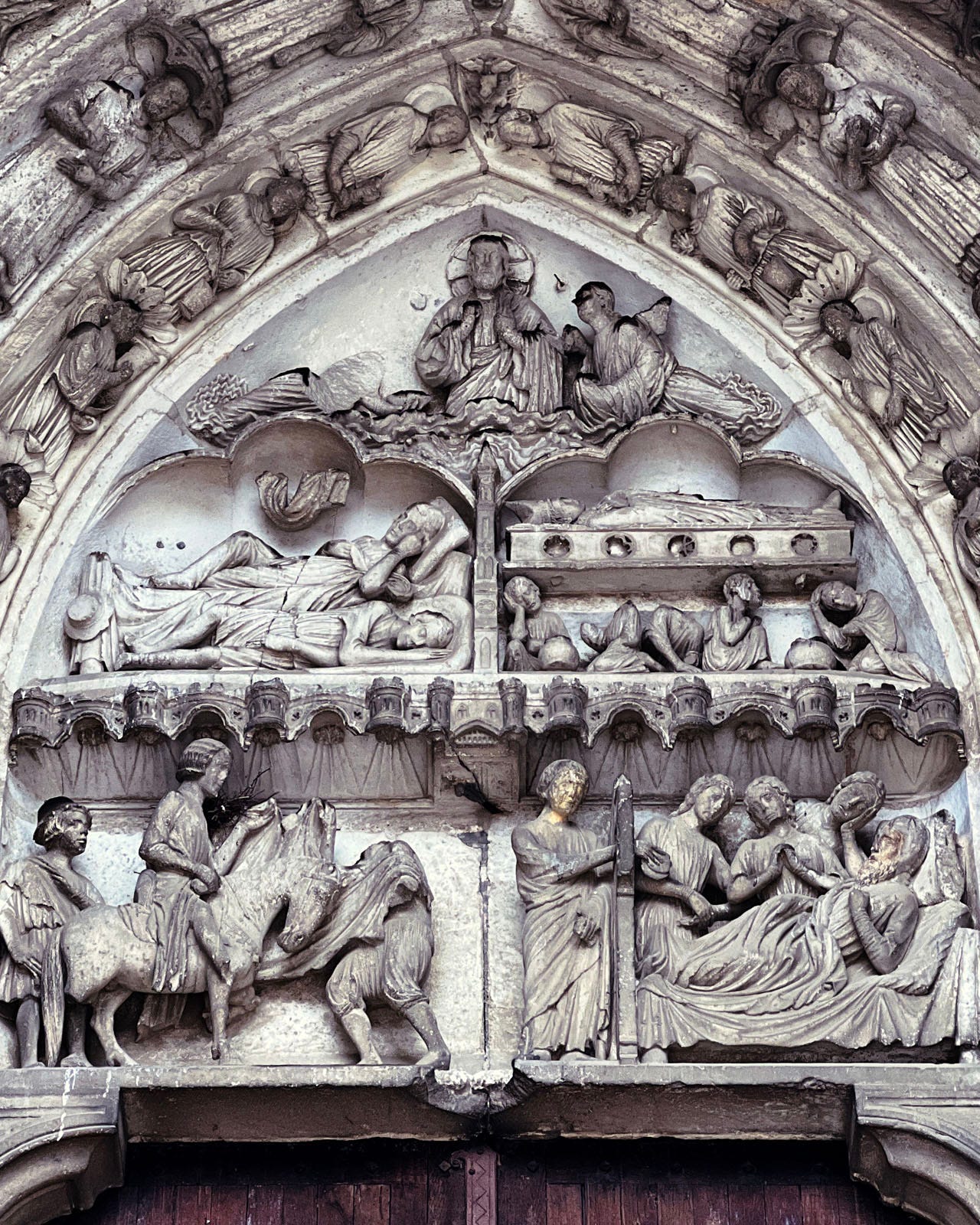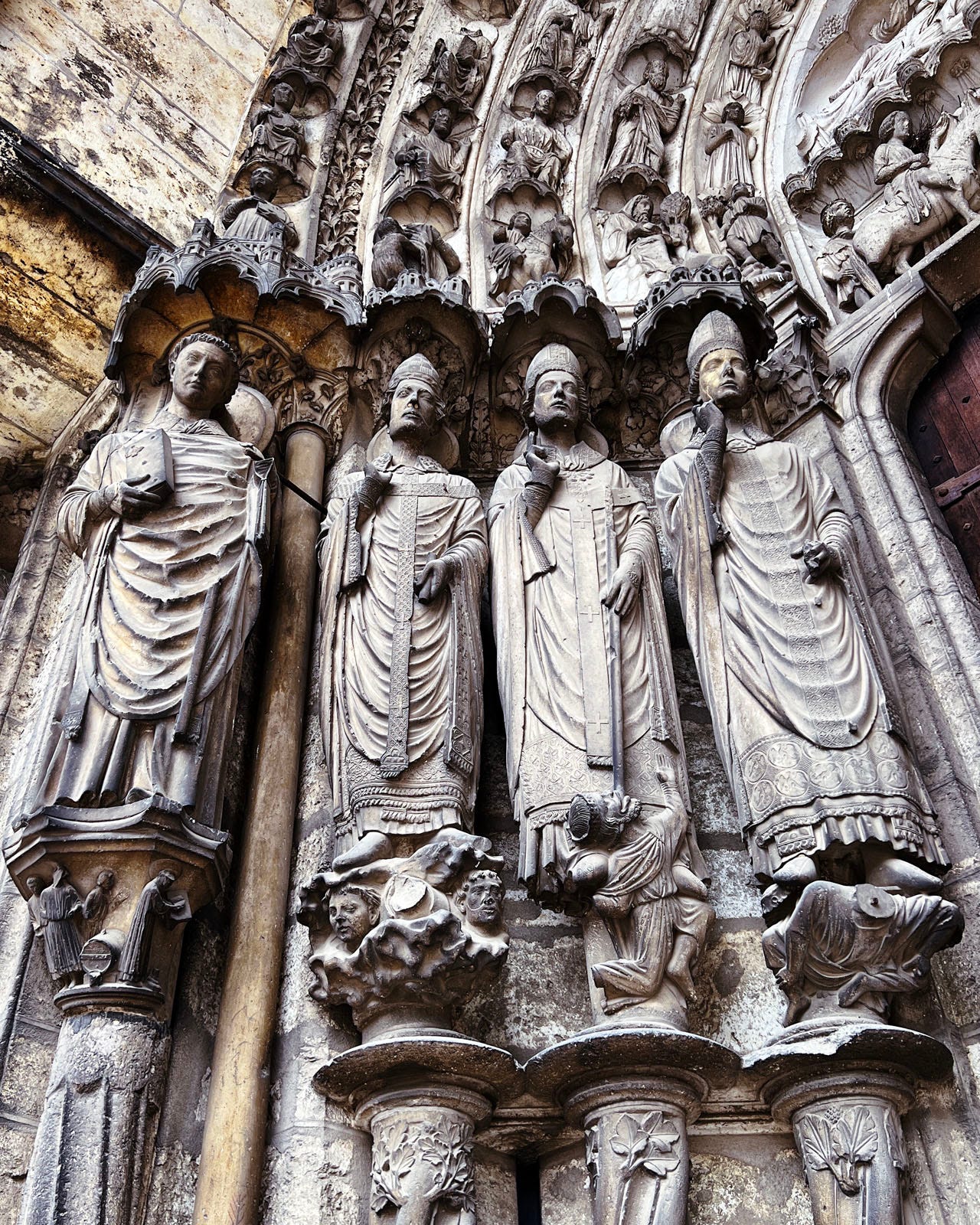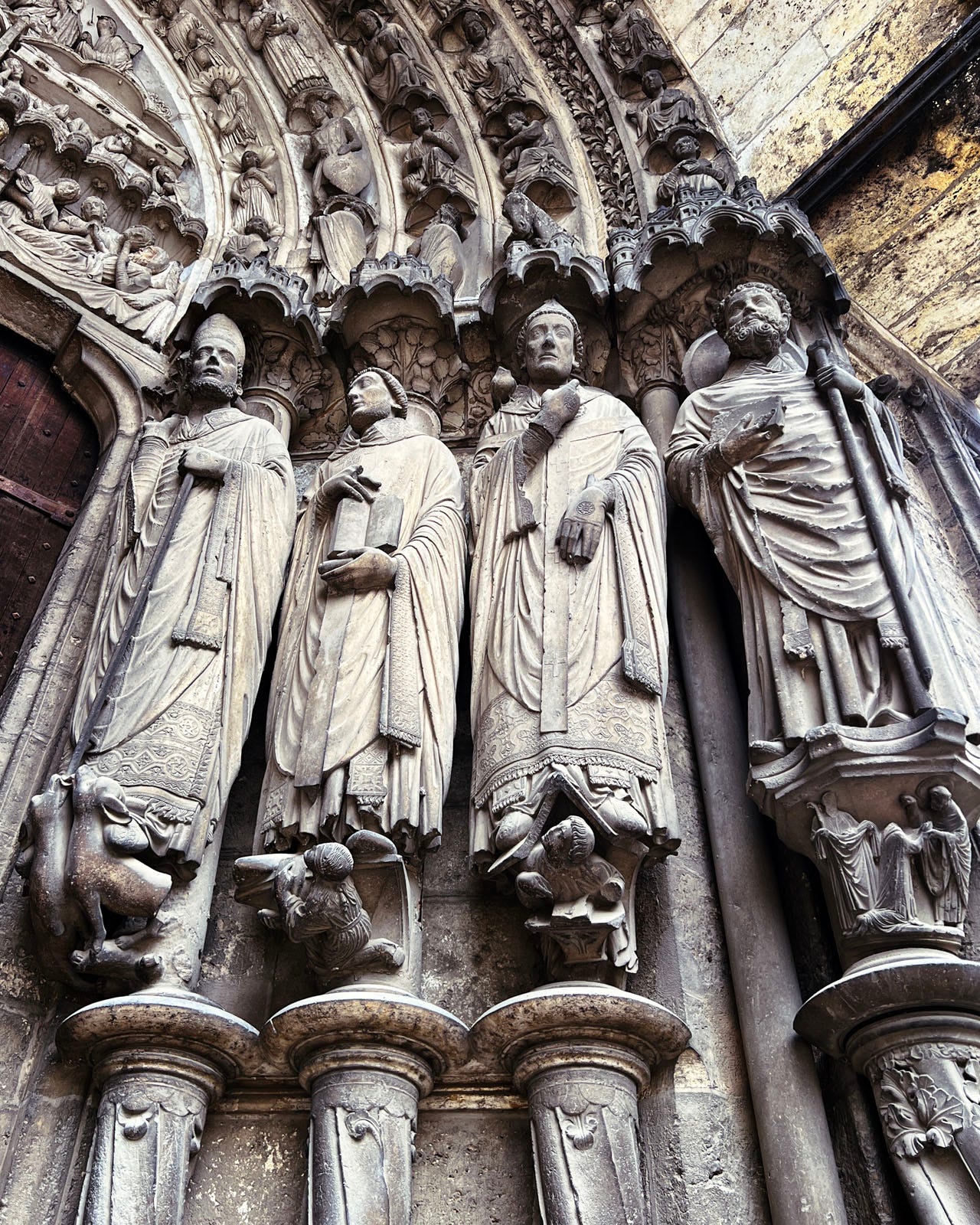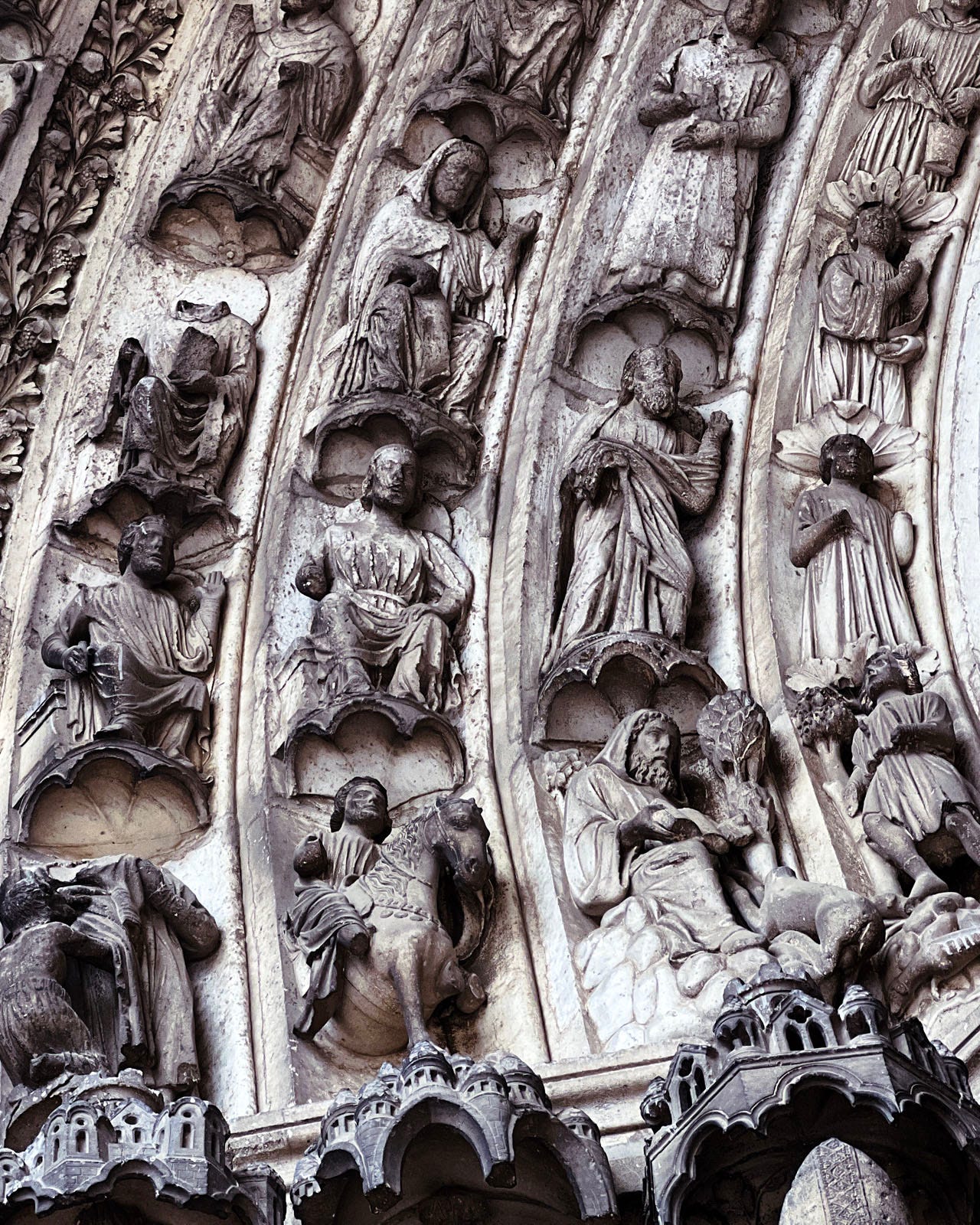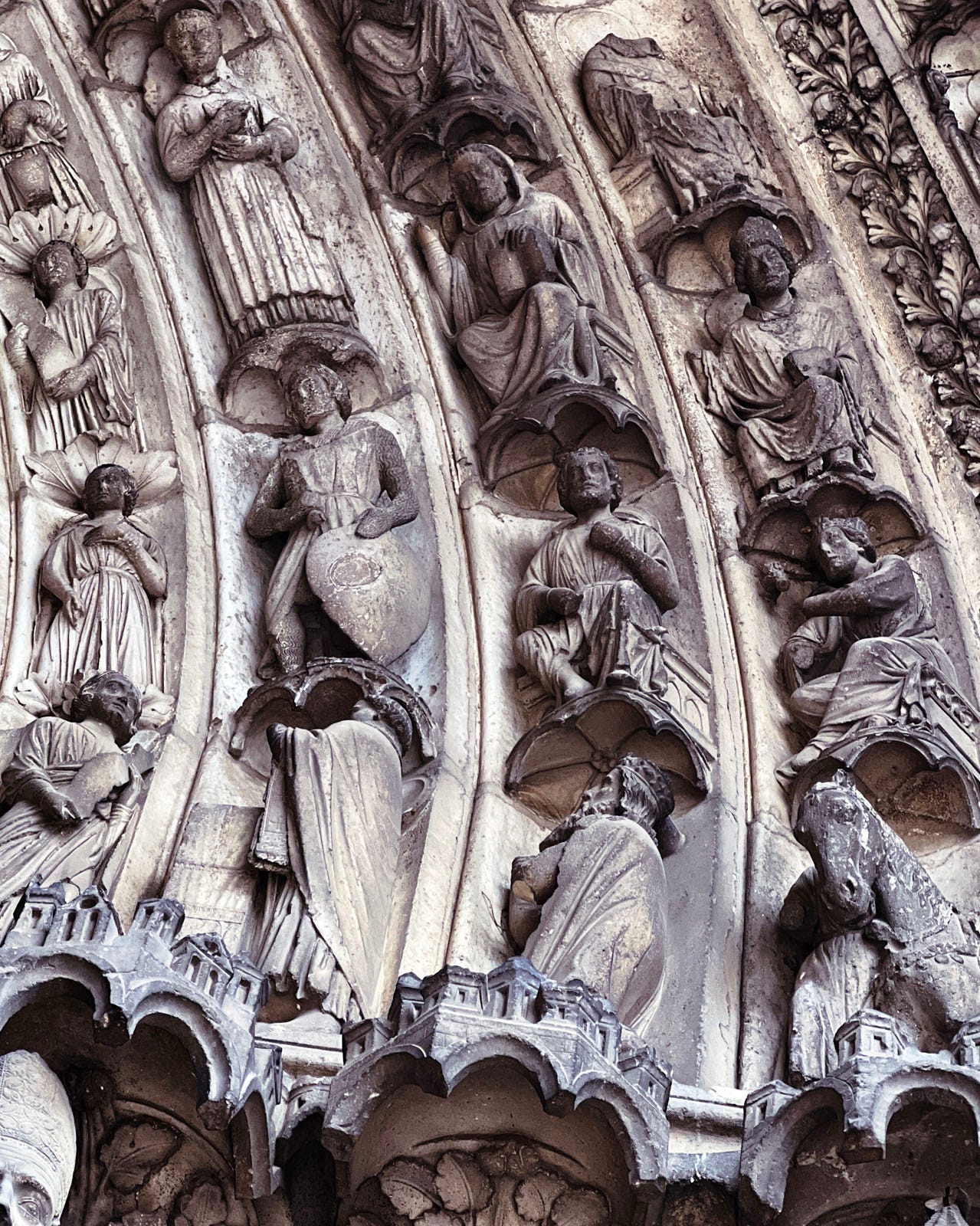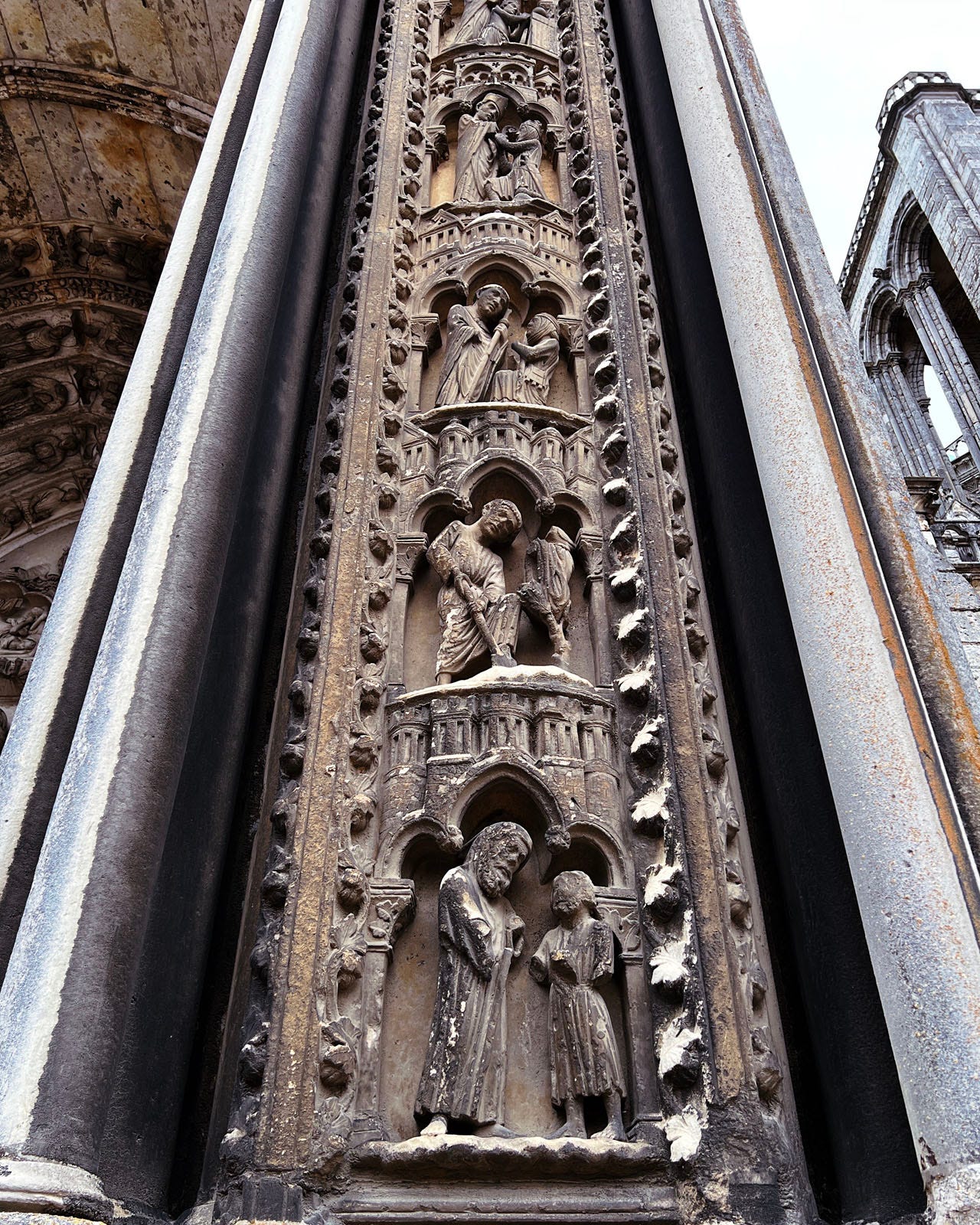(6 min read) This three-part essay is a detailed case study of the greatest Gothic portals of all time. Part I was an overview and look at the west portals, and in Part II we looked at the north portals. This Part III, the final installment of the series, is a close study of the south transept’s porch and portals.
The south transept’s porch and portals were constructed shortly after those of the north transept (see Part II of this essay), and they share the same style and components. They also conceptually mirror the theme of the north transept: the north transept was about the “precursors to Christ,” and the theme here on the south side is the “post-life-of-Christ Church.”
Thus, rather than Old Testament stories and jamb figures, here the focus is on saints, those intercessory figures who were so deeply important to medieval Christianity. The left and right portals here are completely dedicated to “martyr saints” and “confessor saints,” but we will begin our south transept review with a look at the central portal (figure 2), which involves the apostles and Last Judgement.
The Central Portal
The central portal shows a typical Last Judgement scene in the tympanum and lintel (figure 3). The lintel scenes of those entering paradise and those going to hell continue in the lower sections of the archivolts (figures 4 & 5), with people rising from the dead immediately above them, and choirs of angels above that.
At the door level, we have a “teaching Christ” in the trumeau between the doors (figure 6), flanked by the apostles on either side (figures 7 & 8).
Not all of the individual apostles can be identified, though Peter and Andrew can on the left, by their keys and cross; and on the right, there’s St Paul with some Johns and Jameses.
Moving out to the porch piers, we see yet more figures associated with the Last Judgement — the Elders of the Apocalypse are in the vertical “friezes” between piers (figure 9).
The archivolts contain OT kings and queens (figure 10), and if we step outside the porch entirely, we can see niches with French kings between the portal gables (figure 11).
The Left Portal
The left portal (figure 12) is based on the lives (and deaths!) of the “martyr saints.” Saint Stephen is the star of the show here, which makes sense, since he is considered the first martyr (though one could make an argument for Jesus being first, or even Socrates for us philosophical types).
Stephen features in the tympanum and lintel (figure 13), as well as as a jamb figure (figure 14). In the lintel you see him being stoned to death, while above in the tympanum he receives a vision of Christ.
The jamb figures on either side of the doors (figures 14 & 15) show various martyr saints. Some are still famous (Stephen, Denis and George, for example), while some were popular when this was made in the 13th century but are now obscure (Lawrence and Piat).
The two outer figures are warrior/knight figures: Roland is on the left (even though he was neither martyred nor a saint), and George is on the right. Underneath the figures are various attributes associated with martyr saints, such as the torture wheel (figure 16).
Stepping back and looking at the porch columns and archivolts, we see various martyrdoms in the column “friezes” (figure 17) and Wise Virgins in the archivolts (figure 18).
The Right Portal
The theme of the right portal (figure 19) is the “confessor saints” — saints who did not die for their faith, often Church Fathers/Doctors like Ambrose and Jerome.
The tympanum and lintel (figure 20) show scenes from the lives of Saints Martin and Nicholas, both popular saints in the 13th century.
Martin and Nicholas also appear in the jamb figures on both sides of the doors (figures 21 & 22), along with other well-known saints like Ambrose, Jerome, and Gregory.
The archivolts (figures 23 & 24) show a hierarchy of confessor saints, with the story of St Giles in the lowest level — note the common scene of him with a deer he’s protecting from hunters in figure 22.
In addition, confessor saints’ stories continue in the porch columns (figure 25).
~
This concludes our case study of Chartres’ extraordinary portals. If you made it all the way to the end, you will be in a great position to interpret the scenes and figures in most any Gothic portal you come across.






